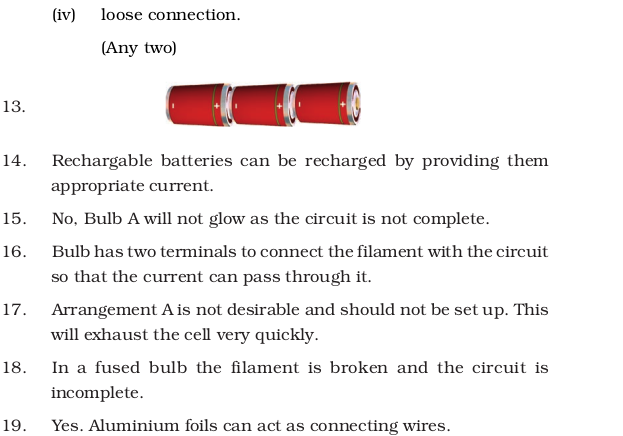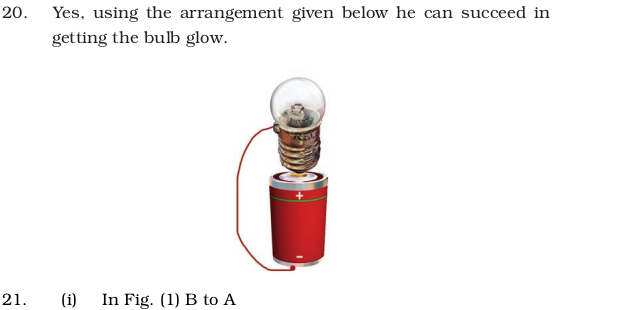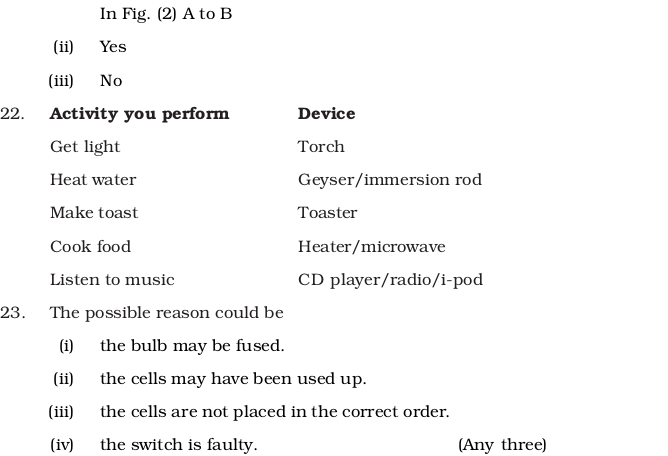NCERT Exemplar Class 6 Science Chapter 12: Electricity and Circuits. NCERT Exemplar Solutions for Class 6 Science Chapter 12 Electricity and Circuits prepare students for their Class 6 exams thoroughly.
Science problems and solutions for the Class 6 pdf are provided here which are similar to the questions being asked in the previous year’s board.
Contents
NCERT Exemplar Class 6 Science Chapter 12: Electricity and Circuits
Class 6: Science Chapter 12 solutions. Complete Class 6 Science Chapter 12 Notes.
Multiple Choice Questions
- Choose from the options a, b, c and d given in Fig. 12.1 the figure which shows the correct direction of current.
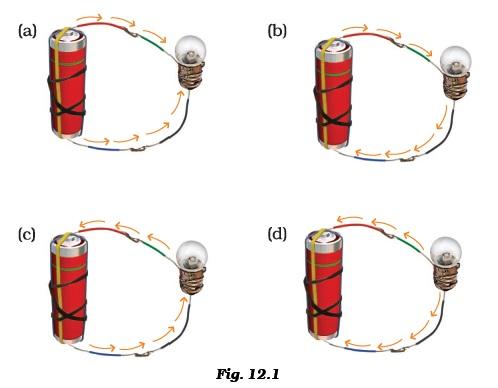
- Choose the incorrect statement.
- (a) A switch is the source of electric current in a circuit.
- (b) A switch help to complete or break the circuit.
- (c) A switch helps us to use electricity as per our requirement.
- (d) When the switch is open there is an air gap between its terminals.
- In an electric bulb, light is produced due to the glowing of
- (a) the glass case of the bulb.
- (b) the thin filament.
- (c) the thick wires supporting the filament.
- (d) gases inside glass case of the bulb.
- In the following arrangement shown in Fig. 12.2, the bulb will not glow if the ends A and B are connected with

- (a) A steel spoon
- (b) A metal clip
- (c) A plastic clip
- (d) A copper wire
- In the circuit shown in Fig. 12.3, when the switch is moved to ‘ON’ position,
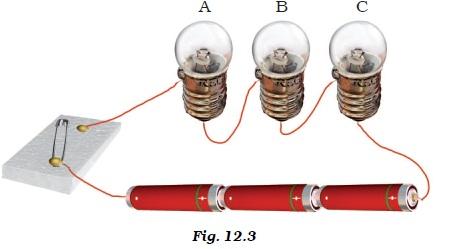
- (a) the bulb A will glow first.
- (b) the bulb B will glow first.
- (c) the bulb C will glow first.
- (d) all bulbs will glow together.
- Filament of a torch bulb is
- (a) a metal case.
- (b) metal tip at the centre of the base.
- (c) two thick wires.
- (d) a thin wire.
- Paheli is running short of connecting wires. To complete an electric circuit, she may use a
- (a) glass bangle.
- (b) thick thread.
- (c) rubber pipe.
- (d) steel spoon.
Very Short Answer Type Questions
- In which of the following circuits A, B and C given in Fig. 12.4, the cell will be used up very rapidly?
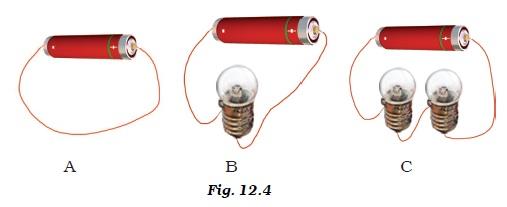
- Fig. 12.5 shows a bulb with its different parts marked as 1, 2, 3, 4 and 5. Which of them label the terminals of the bulb?

Short Answer Type Questions
- You are provided with a bulb, a cell, a switch and some connecting wires. Draw a diagram to show the connections between them to make the bulb glow.
- Will the bulb glow in the circuit shown in Fig. 12.6? Explain.
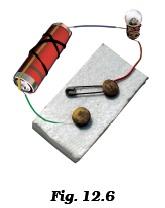
- An electric bulb is connected to a cell through a switch as shown in Fig. 12.7. When the switch is brought in ‘ON’ position, the bulb does not glow. What could be the possible reason/s for it? Mention any two of them.
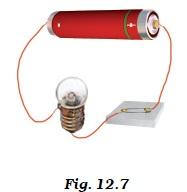
- A torch requires 3 cells. Show the arrangement of the cells, with a diagram, inside the torch so that the bulb glows.
- When the chemicals in the electric cell are used up, the electric cell stops producing electricity. The electric cell is then replaced with a new one. In case of rechargeable batteries (such as the type used in mobile phones, camera and inverters), they are used again and again. How?
- Paheli connected two bulbs to a cell as shown in Fig. 12.8.

She found that filament of bulb B is broken. Will the bulb A glow in this circuit? Give reason. - Why do bulbs have two terminals?
- Which of the following arrangement A, B, C and D given in Fig. 12.9 should not be set up? Explain, why.
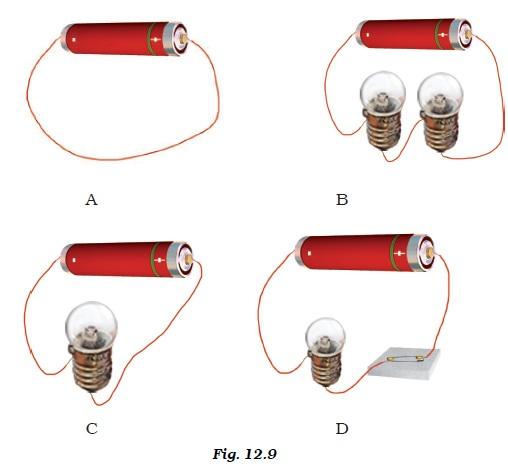
- A fused bulb does not glow. Why?
- Paheli wanted to glow a torch bulb using a cell. She could not get connecting wires, instead, she got two strips of aluminium foil. Will she succeed? Explain, how?
Long Answer Type Questions
- Boojho has a cell and a single piece of connecting wire. Without cutting the wire in two, will he be able to make the bulb glow? Explain with the help of a circuit diagram.
- Fig. 12.10 A and B, show a bulb connected to a cell in two different ways.
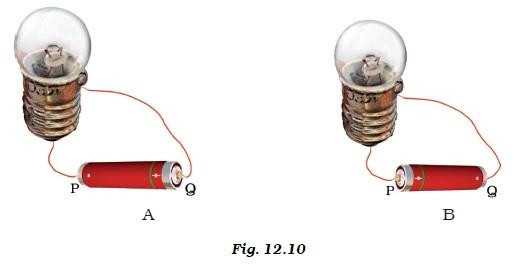
- (i) What will be the direction of the current through the bulb in both the cases. (Q to P or P to Q)
- (ii) Will the bulb glow in both the cases?
- (iii) Does the brightness of the glowing bulb depend on the direction of current through it?
- Think of six activities which use electric current. Also name the devices used to perform the activity.
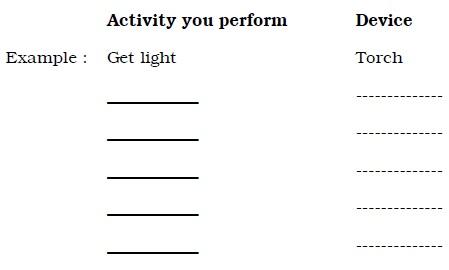
- A torch is not functioning, though contact points in the torch are in working condition. What can be the possible reasons for this? Mention any three.
Answers



